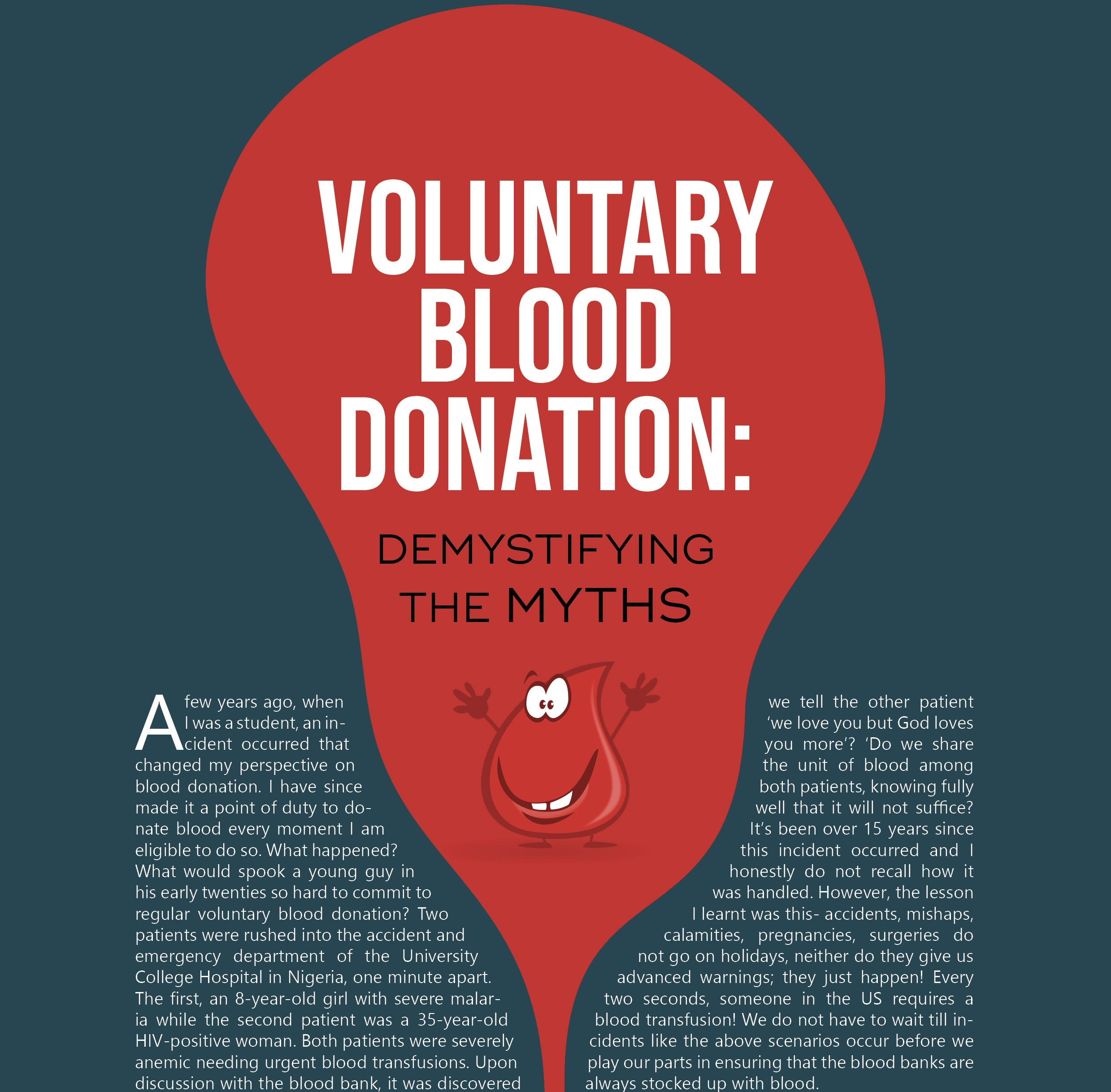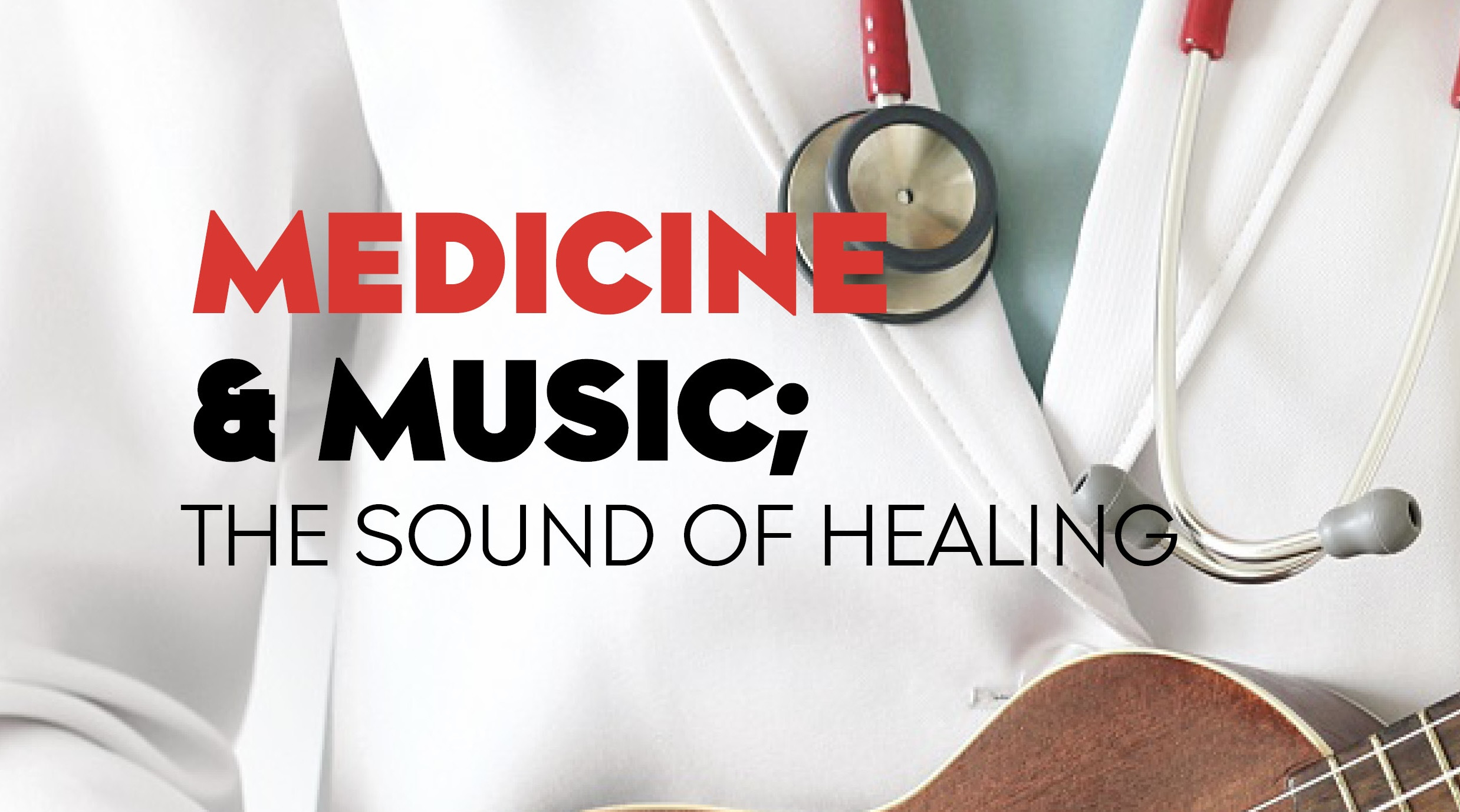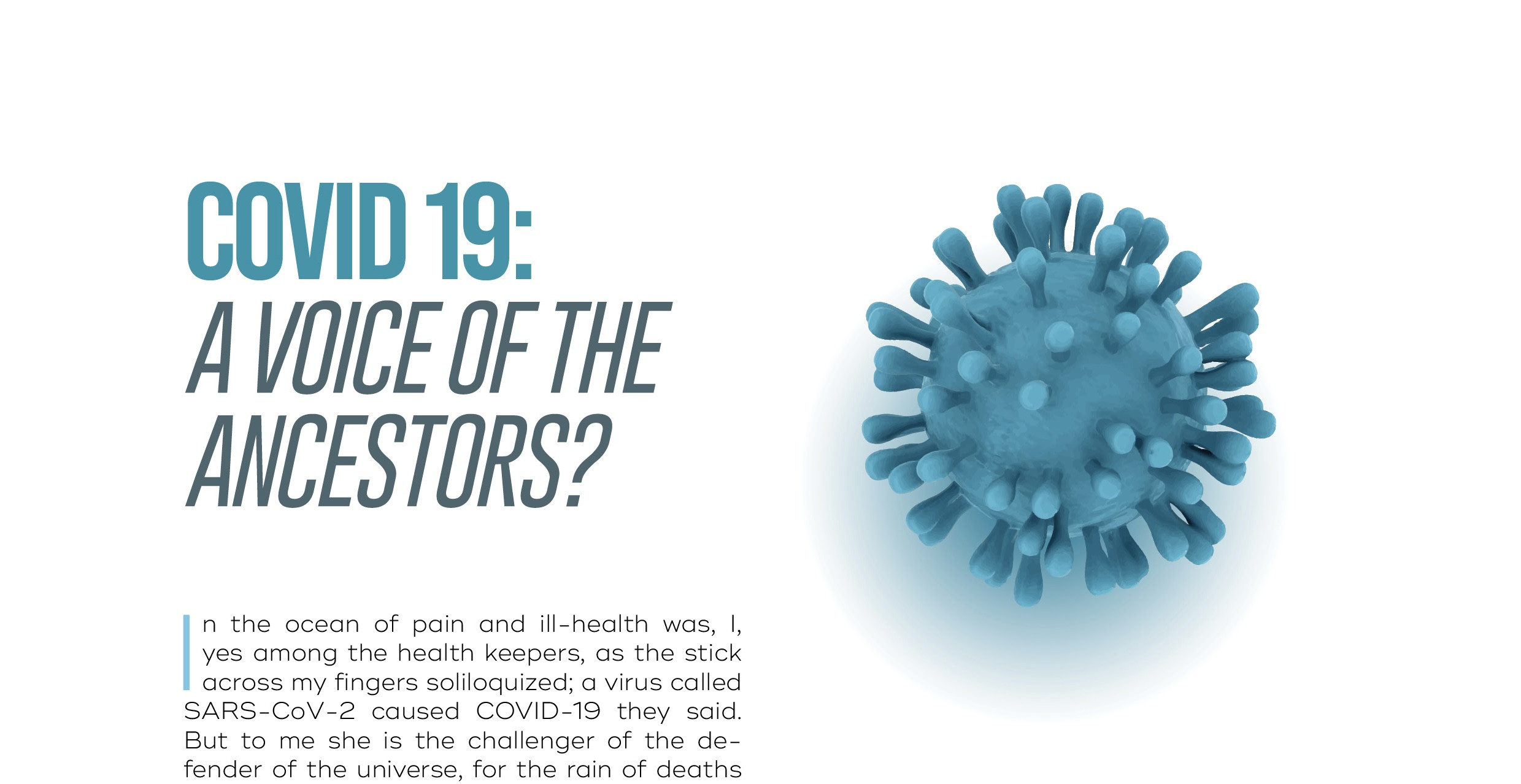A few years ago, when I was a student, an incident occurred that changed my perspective on blood donation. I have since made it a point of duty to donate blood every moment I am eligible to do so. What happened? What would spook a young guy in his early twenties so hard to commit to regular voluntary blood donation? Two patientswererushedintotheaccidentand emergency department of the University College Hospital in Nigeria, one minute apart. The first, an 8-year-old girl with severe malaria while the second patient was a 35-year-old HIV-positive woman. Both patients were severely anemic needing urgent blood transfusions. Upon discussion with the blood bank, it was discovered that both patients had a rare blood group; O-rhe- sus ‘D’ negative. Worse still, the blood bank had only one pint of blood, yet there were two pa- tients in dire need of blood.
The question became ‘who do we give the unit of blood to’? ‘Based on what criteria’? ‘How do we explain this to the relatives of the other patient’? ‘Why do we have to play God by determining who lives and who dies’? Do we tell the other patient ‘we love you but God loves you more’? ‘Do we share the unit of blood among both patients, knowing fully well that it will not suffice? It’s been over 15 years since this incident occurred and I honestly do not recall how it was handled. However, the lesson I learnt was this- accidents, mishaps, calamities, pregnancies, surgeries do not go on holidays, neither do they give us advanced warnings; they just happen! Every two seconds, someone in the US requires a blood transfusion! We do not have to wait till in- cidents like the above scenarios occur before we play our parts in ensuring that the blood banks are always stocked up with blood.
Like the Boy Scout mantra goes; ‘Be prepared’. There are many myths flying around about the whole idea of blood donation and I will try to disprove them based on my 10-years of experi- ence working as a medical laboratory scientist in a blood bank. Most of these myths have been proven wrong while some still remain malignant till date.
MYTHS
1. Blood donation hurts: The needle prick is the only pain one feels during the blood donation exercise. This heals within a day. Any weakness post-donation can be dealt with by drinking enough water and eating.
9. Won’t I contract HIV or other infections after donating? A new sterile needle, which has already been connected to the blood bag, is used each time and is then discarded immediately. This strict procedure and use of sterile equipment make it highly unlikely that you will contract any infection.
10. The hospital sells my blood for a profit: This is not true. Blood is priceless and cannot be sold! Patients are made to pay a processing fee which covers the cost of processing, screening and cross-matching blood to ensure safety and compatibility.
2. Blood donation weakens the immune system:
False. Blood donation does not weaken the immune system, rather it renews it! You actually give out old red and white blood cells which the body replaces within a few days – weeks. However, the body can replace them more rapidly in the event of any danger.
3. Blood donation is time consuming: The whole blood donation exercise takes less than an hour. The procedure involves filling out forms, screening to determine fitness/eligibility, donation, and refreshments afterwards. The donation itself barely lasts 10 minutes.
4. People who weigh heavier are eligible to do- nate blood while those who weigh lighter aren’t: As long as you weigh above 50kg, you are eligible to donate blood. Your weight has nothing to do with the amount of blood your body produces. You may just have more body fat or bone mass, not necessarily more blood!
5. Blood donation is not for women: Unless you are pregnant, lactating, anemic or suffering from a medical condition that lowers your hemoglobin lev- els, you can donate blood. Understandably, women ‘donate’ blood monthly during their menstrual cycles, however, blood donation has nothing to do with sex.
6. One day of rest is needed after donation: After the donation exercise, you will be advised to stay off any strenuous activities for the rest of the day. As long as you drink enough water, avoid alcohol and eat good food, you can resume your daily activities almost right after donating blood
7. If I donate blood, I won’t have enough blood left in my body: The average adult human has be- tween 10 – 12 pints of blood in the body & only about one pint is collected during donation. Immediately you are done donating, the body via the bone marrow re- places the lost plasma within 48 hours while it replaces the lost blood cells within weeks
8. I’m too old, I can’t donate blood: As long as you fall within the age ranges of 18 – 60 years old, you can donate blood and interestingly, if you have been donating blood before, you can still donate till 65 years old!
img src="https://ibb.co/Mc7z3JN" alt="DONATION" width="500" height="600"
A pint of blood donated can help save at least 3 lives, when the blood is separated into its components. Donating blood is good for you but is even better for all the patients desperately needing blood. Finally, it may excite you to know that most public facilities will gladly screen you freely before you donate blood So, what is stopping you? Why not give an arm today to help save a life?
- Ifeoluwa ABIODUN






Leave a Comment